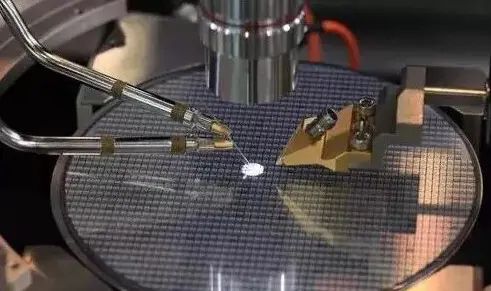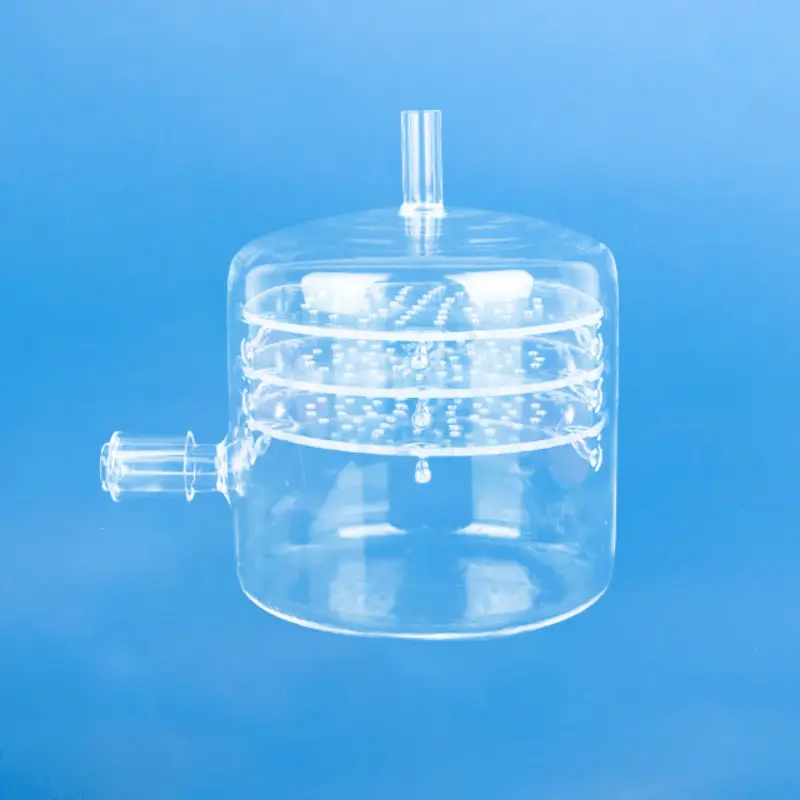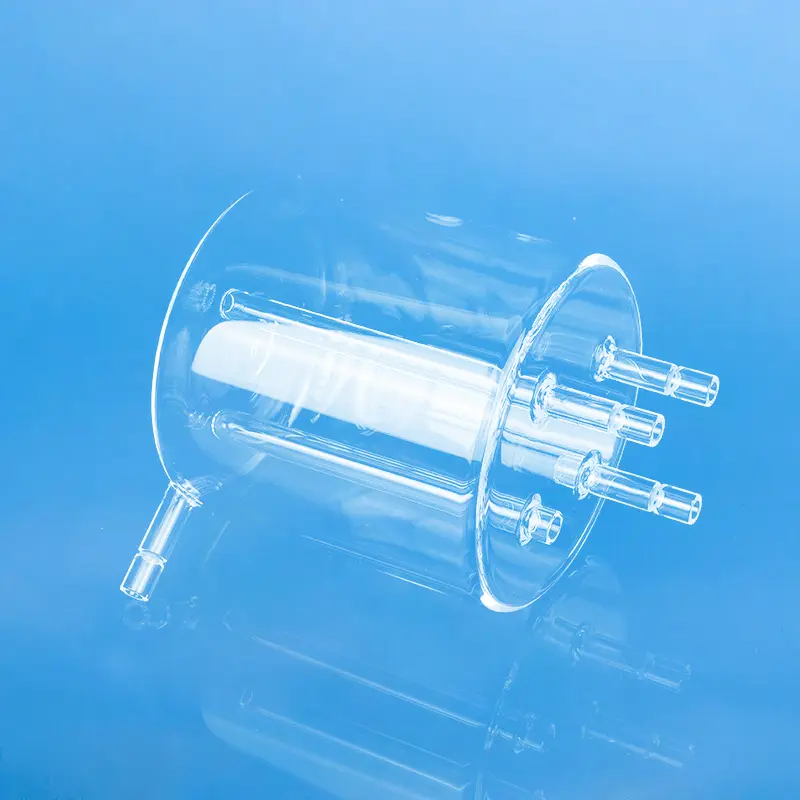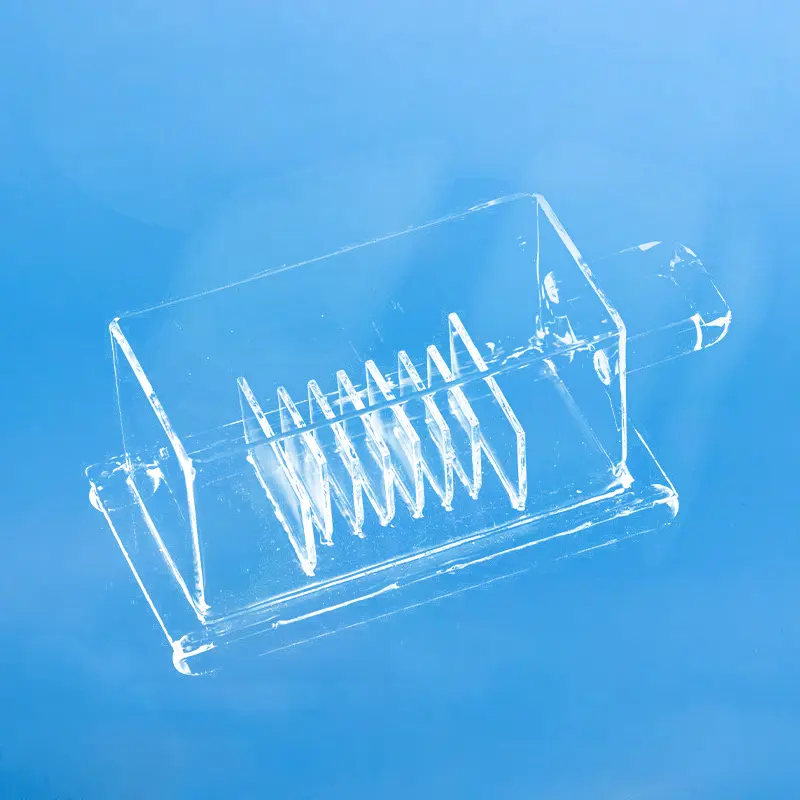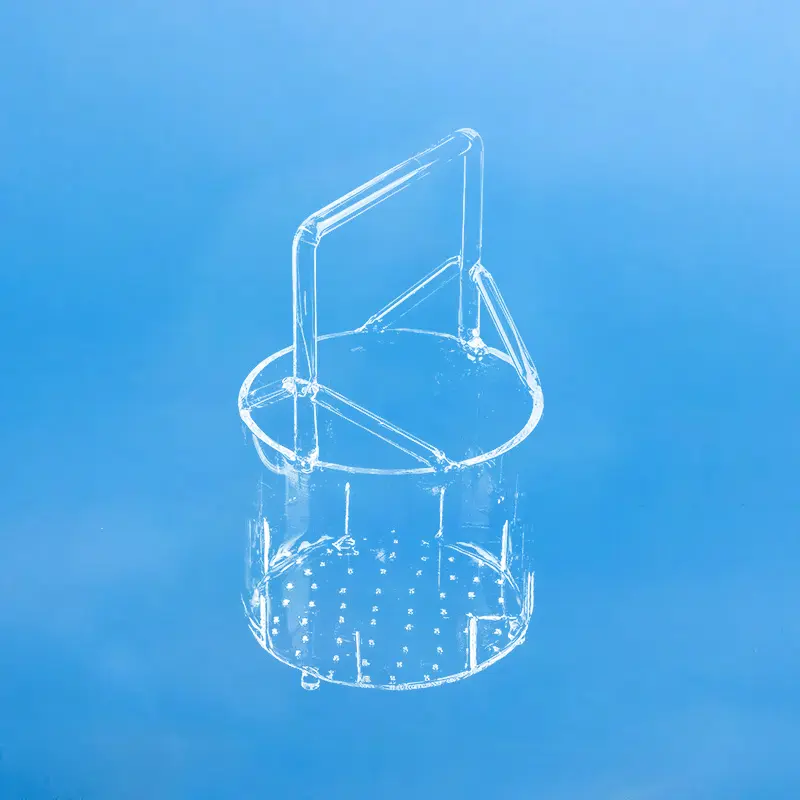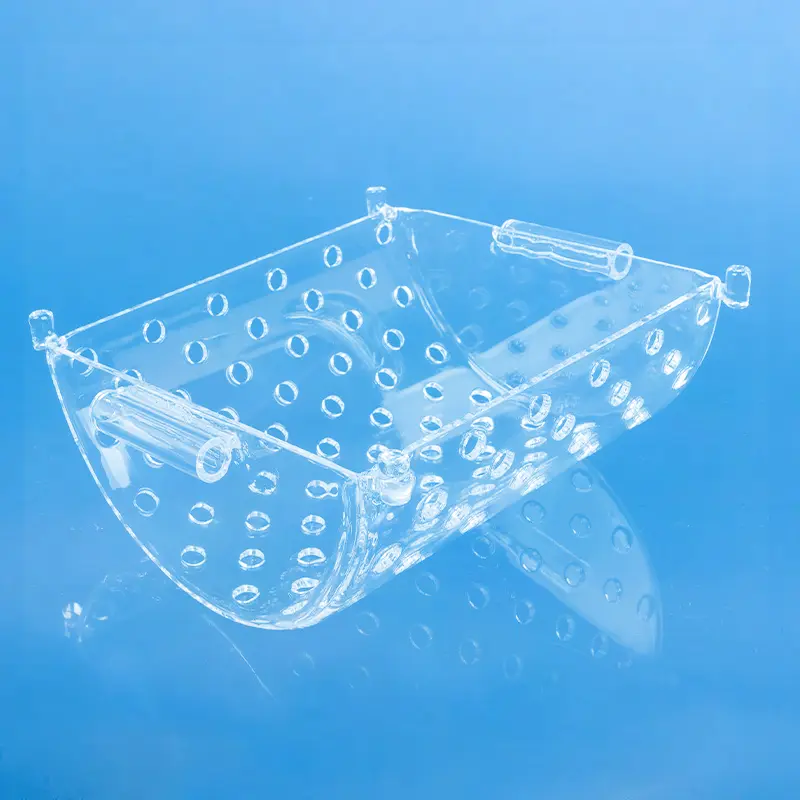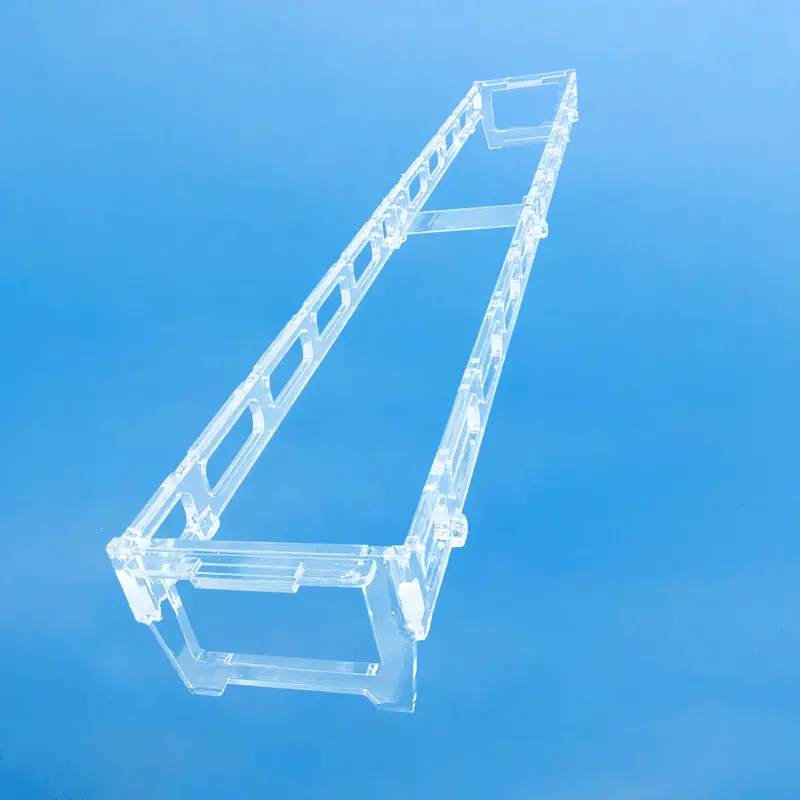Our high-purity custom quartz bubblers and gas delivery vessels are precision-engineered fused silica components designed for critical applications. Ideal for CVD/MOCVD precursor delivery, semiconductor processing, and handling corrosive or high-temperature chemicals, these vessels ensure precise fluid/gas control. Leveraging quartz’s exceptional purity, chemical inertness, and thermal stability, our custom-fabricated solutions meet the most demanding industrial and research requirements
| Property Content | Property Values |
|---|---|
| SiO2 | 99.99% |
| Density | 2.2×10³ kg/cm³ |
| Hardness | 5.5 - 6.5 Mohs' Scale 570 KHN 100 |
| Tensile Strength | 4.8×10⁷ Pa (N/mm2) (7000 psi) |
| Compression Strength | >1.1×10⁹ Pa (160,000 psi) |
| Coefficient of Thermal Expansion | 5.5×10⁻⁷ cm/cm·°C (20°C-320°C) |
| Thermal Conductivity | 1.4 W/m·°C |
| Specific Heat | 670 J/kg·°C |
| Softening Point | 1730°C (3146°F) |
| Annealing Point | 1210°C (2210°F) |
| Strain Point | 1120°C (2048°F) |
| Work Temperature | 1200°C (2192°F) |
| Electrical Resistivity | 7×10⁷ ohm cm (350°C) |
| Size | Customized |
| Logo | Customized Logo Accept |
High Purity
Quartz source bottles are made from high-purity quartz glass, ensuring the chemical stability and purity of the container, thus preventing any reactions with or contamination of the stored materials.
High-Temperature Resistance
Quartz glass possesses excellent high-temperature resistance, enabling long-term use at elevated temperatures without deformation or damage.
Corrosion Resistance
Quartz glass demonstrates good corrosion resistance to a wide variety of chemical reagents, making it suitable for storing and transferring various corrosive substances.
Easy Cleaning
The smooth surface of quartz glass prevents dirt from adhering, facilitating easy cleaning and maintenance.
Application Scenario
Semiconductor Industry
Semiconductor Material and Device Production: Quartz source bottles are indispensable materials in semiconductor production, frequently used in crucibles, boats, furnace core tubes, and bell jars for growing germanium and silicon single crystals. These components need to withstand high temperatures and corrosive environments, making the high-temperature and corrosion resistance of quartz source bottles ideal.
Cleaning and Diffusion: In semiconductor cleaning and diffusion processes, quartz source bottles are also commonly used as cleaning tanks and diffusion tubes to ensure process stability and precision.
Optical Technology
Optical Instruments and Equipment: Due to their excellent optical properties, quartz source bottles are widely used in making prisms and lenses for optical instruments such as ultrasonic delay lines in radar, infrared tracking and ranging equipment, infrared cameras, communication devices, spectrographs, and spectrophotometers.
Large Astronomical Telescopes: Quartz glass, due to its high transparency and low thermal expansion coefficient, is also used in manufacturing reflective windows for large astronomical telescopes to enhance the telescope’s observation precision and stability.
Laboratory and Research
Laboratory Containers: Due to their chemical stability and high-temperature resistance, quartz source bottles are often used as laboratory containers, such as for collecting and processing chemical waste.
Research Equipment: In research settings, quartz source bottles are also used to manufacture various precision components for research equipment to meet the needs of scientific studies.
Quartz source bottles have a silicon dioxide (SiO2) content of up to 99.995%, which eliminates risks associated with glass inhomogeneity (including layering) and the leaching of problematic metal ions.
Quartz source bottles exhibit extremely high stability at high temperatures and do not easily deform. Their low thermal expansion coefficient and excellent thermal shock resistance allow them to maintain their shape and structural integrity under drastic temperature changes.
Ensuring Experimental Accuracy: Quartz source bottles can remain stable at temperatures up to 1100°C. This means that in high-temperature experiments, quartz source bottles serve as reliable containers, ensuring that the accuracy of the experimental results is not compromised by thermal deformation or decomposition of the container.
Enhancing Experimental Safety: Quartz source bottles possess outstanding thermal shock resistance, meaning they are not prone to cracking even under rapid temperature changes. This significantly reduces safety risks in high-temperature experiments, protecting laboratory personnel and equipment.
Frequently asked questions
We specialize in the end-to-end manufacturing of high-purity quartz glass components. Our core product lines include:
Quartz Tubing & Rods: A wide range of diameters and specifications.
Quartz Plates & Discs: Precision-cut and polished for optical and industrial use.
Quartz Labware: A full suite of standard and custom glassware, including beakers, flasks, and boats.
Semiconductor-Grade Quartz: High-purity components like process tubes and carriers for semiconductor fabrication.
Custom Fabricated Components: We can produce complex parts tailored to your unique designs and specifications.
Yes. Custom fabrication is at the core of our business. With over a decade of specialized experience, we partner with companies to provide expert OEM/ODM services. Our capabilities include welding, grinding, drilling, polishing, bending, and other precision processing techniques to create components that meet your exact requirements.
Quality is paramount in our manufacturing process. We are an ISO 9001:2015 certified manufacturer, ensuring that our processes meet international quality management standards.Our products also undergo rigorous SGS testing for purity and performance. We use high-purity raw materials (up to 99.998% SiO2) to produce fused quartz and fused silica products with exceptional thermal stability, high-temperature resistance, and chemical inertness.
We've streamlined our process to be as efficient as possible:
Submit Your RFQ: Send us your technical drawings, specifications, and requirements via our website contact form or email.
Rapid Response: You can expect an initial response within minutes and detailed communication within half an hour.
Design & Proposal: We will deliver a detailed design proposal and a competitive quote within 24 hours.
Prototyping & Production: Upon approval, we move swiftly from prototyping to full-scale production to meet your deadlines.
Partnering with Aoxin Quartz offers several key advantages:
Proven Expertise: With 10+ years in the industry, we have the technical knowledge to tackle complex challenges.
One-Stop Solution: We manage the entire production process, from sourcing high-purity raw materials to fabricating and finishing complex components.
Competitive Value: Located in a major quartz production hub, we leverage an efficient supply chain and advanced manufacturing to offer exceptional quality at a competitive price point.
Dedicated Partnership: Over 90% of our clients become long-term partners. We are committed to your success through responsive service, reliable quality, and innovative solutions.


